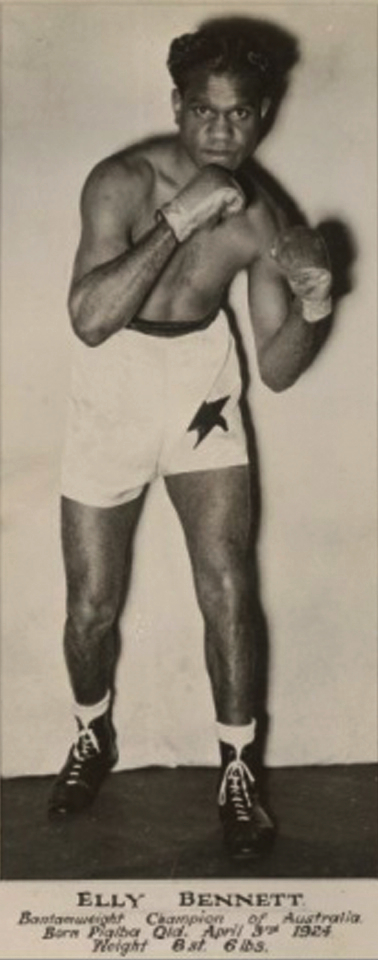Elley Bennett 1924 to 1981
Son of Aboriginal parents Roger Bennett, bullock driver and athlete, and his wife Dolly, nee Mitchell.
Elley is raised at Barambah Aboriginal Settlement and Maryborough. At 13 he leaves school and becomes a rural labourer, cutting timber and sugar cane, digging vegetables and peanuts, and working with stock. He plays football at first, but his shortness pushes him into boxing. From punching a bag of sawdust dangling from a mango tree, he graduates to tent bouts and preliminaries at Maryborough. He moves to Brisbane and trains with Snowy Hill and begins to box in September 1946.
Bennett’s eight-year career as a professional boxer, mostly as a bantamweight, spanned 59 fights for 44 wins (40 by knockout), 1 draw, 13 losses and 1 no-contest. Described as an explosive boxer, Bennett had lightning fists, strong counters and a big punch.
In April 1948 in Melbourne he won the Australian bantamweight title with a third-round knockout over Mickey Francis. Next year he knocked out Emile Famechon (twice), Jean Jouas, and leading world-title contender Cecil Schoonmaker, failing against Harold Dade. In 1950 he twice defeated both Vic Eisen and Chai Sitphol but lost against Ernesto Aguilar.
He won the national featherweight title from Ray Coleman in April 1951, becoming a dual title holder. Next month he lost his bantamweight title to Jimmy Carruthers after a tough fifteen rounds, and told Hill “Thank heaven that’s over. No more bantamweight starving for me. I feel like a free man”. From December 1953 he fought as a featherweight, retiring in September 1954 with the crown.

